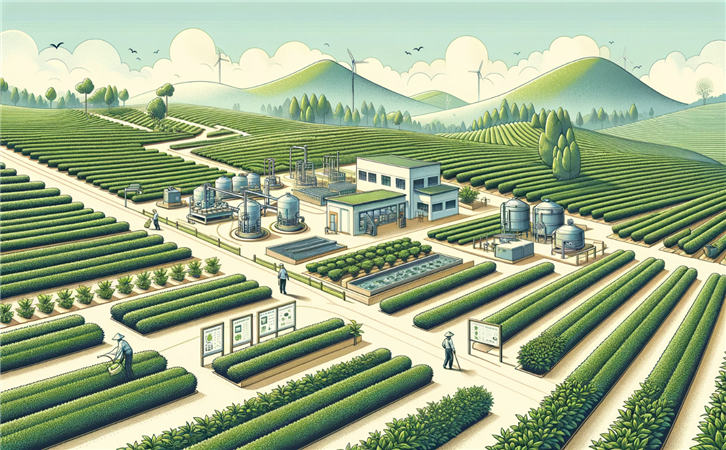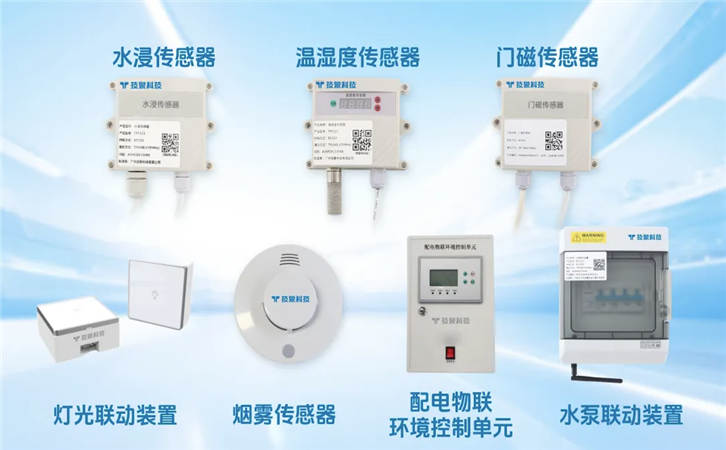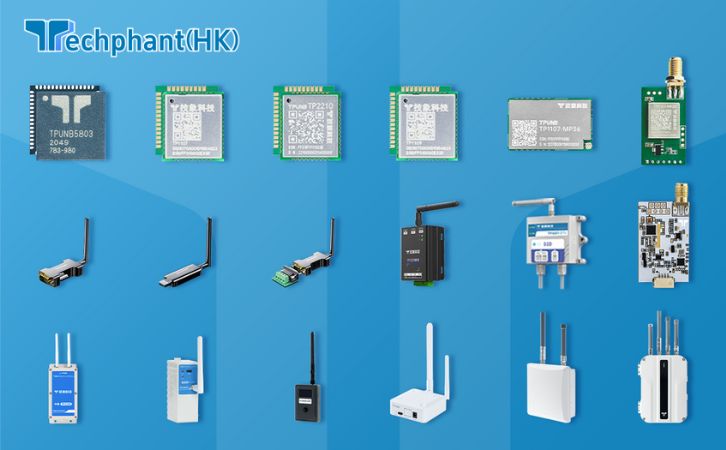The integration of Internet of Things (IoT) technology into agriculture has revolutionized farming practices, enabling precision agriculture and sustainable resource management. At the heart of IoT-based agriculture systems are sensors, which collect real-time data on various environmental and biological parameters. These sensors empower farmers to make informed decisions, optimize resource use, and enhance crop and livestock productivity. This article explores the key types of sensors used in IoT agriculture systems, detailing their functionality and applications.
I. Soil Sensors
Soil sensors are critical for monitoring the health and condition of the soil, which directly impacts crop growth. These sensors measure parameters such as moisture content, nutrient levels, pH, and temperature, providing farmers with actionable insights for irrigation and fertilization.
- Soil Moisture Sensors: These sensors measure the volumetric water content in the soil, helping farmers optimize irrigation schedules. Capacitive and resistive soil moisture sensors are commonly used, with capacitive sensors being more accurate due to their resistance to corrosion. For example, a capacitive soil moisture sensor can detect water levels in real time, enabling automated irrigation systems to deliver water only when necessary, reducing water wastage by up to 30% in some cases.
- Nutrient Sensors: These sensors analyze the presence of essential nutrients like nitrogen, phosphorus, and potassium (NPK). Ion-selective electrodes or optical sensors are often used to assess nutrient levels, allowing farmers to apply fertilizers precisely where needed. This targeted approach minimizes over-fertilization, which can lead to soil degradation and environmental pollution.
- pH Sensors: Soil pH affects nutrient availability and microbial activity. pH sensors provide real-time data to ensure optimal soil conditions for specific crops. For instance, blueberries thrive in acidic soils (pH 4.5–5.5), and pH sensors help farmers maintain these conditions.
- Soil Temperature Sensors: These sensors monitor soil temperature, which influences seed germination and root development. Thermocouples or thermistors are commonly used, providing data to guide planting schedules and protect crops from temperature extremes.
Soil sensors are typically connected to IoT platforms via low-power wide-area networks (LPWAN) like LoRaWAN, enabling data transmission to cloud-based systems for analysis. This connectivity allows farmers to monitor soil conditions remotely and make data-driven decisions to enhance crop yields.
II. Weather and Environmental Sensors
Weather and environmental sensors collect data on atmospheric conditions, which are crucial for planning agricultural activities. These sensors help farmers adapt to changing weather patterns and mitigate risks associated with adverse conditions.
- Temperature and Humidity Sensors: These sensors measure ambient temperature and relative humidity, which affect plant transpiration and disease susceptibility. For example, high humidity levels can promote fungal growth, and sensors like the DHT22 provide accurate readings to trigger preventive measures, such as adjusting greenhouse ventilation.
- Rainfall Sensors: Tipping bucket rain gauges or optical rain sensors measure precipitation levels, helping farmers plan irrigation and protect crops from overwatering. In regions prone to heavy rainfall, these sensors can alert farmers to potential flooding risks.
- Wind Speed and Direction Sensors: Anemometers and wind vanes monitor wind conditions, which influence pollination, pesticide application, and crop lodging. Real-time wind data can guide farmers in scheduling spraying activities to avoid drift and ensure effective application.
- Light Sensors: Photosynthetically Active Radiation (PAR) sensors measure light intensity in the 400–700 nm range, critical for photosynthesis. These sensors help optimize greenhouse lighting or assess whether crops are receiving adequate sunlight in open fields.
By integrating weather sensor data with predictive analytics, IoT systems can forecast weather events and recommend actions, such as covering crops during frost or delaying planting during excessive rain. These sensors are often solar-powered, ensuring sustainability in remote agricultural settings.
III. Crop Health Sensors
Crop health sensors monitor the physiological status of plants, enabling early detection of stress, diseases, or pest infestations. These sensors are vital for precision agriculture, as they allow farmers to address issues before they escalate.
- NDVI Sensors: Normalized Difference Vegetation Index (NDVI) sensors use spectral reflectance to assess plant health and vigor. By measuring the difference between near-infrared and red light reflected by plants, NDVI sensors indicate chlorophyll levels and biomass. For instance, a low NDVI value may signal nutrient deficiency or water stress, prompting targeted interventions.
- Thermal Imaging Sensors: These sensors detect heat emissions from plants, identifying areas of stress due to drought, disease, or pest damage. Thermal cameras mounted on drones or IoT devices can scan large fields, providing heat maps to guide precision treatments.
- Leaf Wetness Sensors: These sensors measure moisture on leaf surfaces, which is a key indicator of fungal disease risk. By detecting prolonged leaf wetness, farmers can apply fungicides proactively, reducing crop losses.
- Chlorophyll Fluorescence Sensors: These advanced sensors measure the efficiency of photosynthesis, providing insights into plant stress before visible symptoms appear. They are particularly useful for high-value crops like vineyards or orchards.
Crop health sensors are often integrated with IoT platforms that use machine learning to analyze data trends and predict potential issues. For example, a sudden drop in NDVI readings could trigger an alert for pest inspection, saving crops from significant damage.
IV. Livestock Monitoring Sensors
IoT sensors are not limited to crop farming; they also play a significant role in livestock management. These sensors track animal health, behavior, and location, improving productivity and welfare in livestock farming.
- GPS Trackers: Wearable GPS sensors monitor the location of livestock in large grazing areas, preventing theft and ensuring animals stay within safe boundaries. For example, GPS collars on cattle can send real-time location data to farmers’ smartphones via IoT networks.
- Health Monitoring Sensors: These sensors measure vital signs such as heart rate, body temperature, and activity levels. Wearable devices like ear tags or rumen boluses detect early signs of illness, such as fever or reduced activity, allowing timely veterinary intervention. Studies show that health monitoring sensors can reduce livestock mortality rates by up to 20%.
- Feed and Water Sensors: IoT-enabled feeders and water troughs monitor consumption patterns, ensuring animals receive adequate nutrition and hydration. These sensors can alert farmers to changes in feeding behavior, which may indicate health issues.
- Environmental Sensors for Livestock: Sensors in barns or shelters monitor temperature, humidity, and air quality (e.g., ammonia levels), ensuring optimal living conditions. Poor air quality can reduce milk production in dairy cows, and IoT sensors help maintain a healthy environment.
Livestock sensors are typically designed for durability and low power consumption, using technologies like NB-IoT for long-range connectivity. Data from these sensors can be integrated into farm management systems, providing a holistic view of livestock operations.
Conclusion
The adoption of IoT sensors in agriculture has transformed traditional farming into a data-driven, efficient, and sustainable practice. Soil sensors optimize resource use, weather sensors enable climate-adaptive farming, crop health sensors ensure timely interventions, and livestock sensors enhance animal welfare and productivity. Together, these sensors form the backbone of IoT-based agriculture systems, enabling farmers to monitor and manage their operations with unprecedented precision. However, challenges such as high initial costs, connectivity issues in rural areas, and the need for farmer training must be addressed to ensure widespread adoption. As sensor technology advances and becomes more affordable, IoT-based agriculture systems will continue to drive the future of smart farming, contributing to global food security and environmental sustainability.



